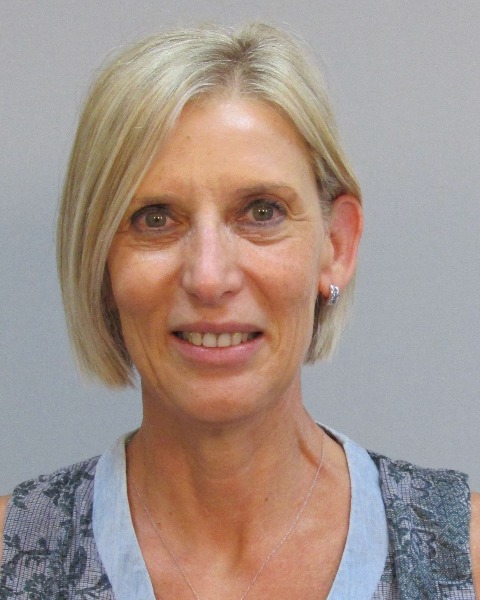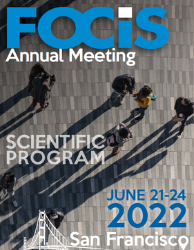Back
Fc Structure and Function of Antibodies Elicited by COVID-19 mRNA Vaccine and Infection
Wednesday, June 22, 2022
3:45 PM – 4:00 PM PT
Location: Salons 3/4
Authors: Tali Feferman, n/a (Presenting Author) - Department of Immunology Weizmann Institute of Science, Rehovot 76100, Israel.; Inbal Farkash, n/a (Co-Author) - Immunology Department The Weizmann Institute of Science; Noy Cohen Saban, n/a (Co-Author) - Immunology Department, The Weizmann Institute of Science; Yahel Avraham, n/a (Co-Author) - Immunology Department, The Weizmann Institute of Science; David Morgensteren, n/a (Co-Author) - INCPM, The Weizmann Institute of Science; Natasha Barth, n/a (Co-Author) - Immunology Department, The Weizmann Institute of Science; Yaniv Lustig, n/a (Co-Author) - Central Virology Laboratory, Sheba medical center; Liron Miller, n/a (Co-Author) - Blood bank, Sheba medical center; Yishai Levin, n/a (Co-Author) - INCPM, Weizmann Institute of Science; Rony Dahan, n/a (Co-Author) - Immunology Department, The Weizmann Institute of Science

Tali Feferman, MSc, PhD
Associate staff scientist,
Weizmann Institute of Science
rehovot, HaDarom, Israel
Marianna Rowlands, PhD
Associate Director
Novartis Institutes for Biomedical Research
Cambridge, Massachusetts, United States
Presenting Author(s)
Chair(s)
The outbreak of the COVID-19 pandemic, with its associated tremendous health and economic consequences, has sparked a worldwide effort to design vaccines using different platforms. Messenger RNA-based vaccines against COVID-19 induce a robust anti-SARS-CoV-2 antibody response with potent viral neutralization activity. Antibody effector functions are determined by its constant region subclasses as well as by its glycosylation patterns, but their role in vaccine efficacy is unclear. Moreover, whether vaccination induces antibodies similar to those in patients with COVID-19 remains unknown.
This study was designed to investigate the overall IgG response, IgG subclass distribution, subclass-specific Fc glycosylation patterns and effector functions of IgGs produced following administration of the SARS-CoV-2 mRNA-based BNT162b2 vaccine and to compare these to the response to natural infection with SARS-CoV-2. For this purpose, we analyzed plasma samples from adults (aged ≥ 18-year-old) from the vaccine cohort 2 weeks post each vaccine dose and from patients with mild or severe symptoms at corresponding time points from diagnosis.
We analyze BNT162b2 vaccine-induced IgG subclass distribution and Fc glycosylation patterns and their potential to drive effector function via Fc-gamma receptors and complement pathways. We identified unique and dynamic pro-inflammatory Fc compositions that are distinct from those in patients with COVID-19 and convalescences. Vaccine-induced anti-spike IgG is characterized by distinct Fab- and Fc-mediated functions between different age groups and in comparison, to antibodies generated during natural viral infection.
These data highlight the heterogeneity of Fc responses to SARS-CoV-2 infection and vaccination and suggest that they support long-lasting protection differently.
This study was designed to investigate the overall IgG response, IgG subclass distribution, subclass-specific Fc glycosylation patterns and effector functions of IgGs produced following administration of the SARS-CoV-2 mRNA-based BNT162b2 vaccine and to compare these to the response to natural infection with SARS-CoV-2. For this purpose, we analyzed plasma samples from adults (aged ≥ 18-year-old) from the vaccine cohort 2 weeks post each vaccine dose and from patients with mild or severe symptoms at corresponding time points from diagnosis.
We analyze BNT162b2 vaccine-induced IgG subclass distribution and Fc glycosylation patterns and their potential to drive effector function via Fc-gamma receptors and complement pathways. We identified unique and dynamic pro-inflammatory Fc compositions that are distinct from those in patients with COVID-19 and convalescences. Vaccine-induced anti-spike IgG is characterized by distinct Fab- and Fc-mediated functions between different age groups and in comparison, to antibodies generated during natural viral infection.
These data highlight the heterogeneity of Fc responses to SARS-CoV-2 infection and vaccination and suggest that they support long-lasting protection differently.

